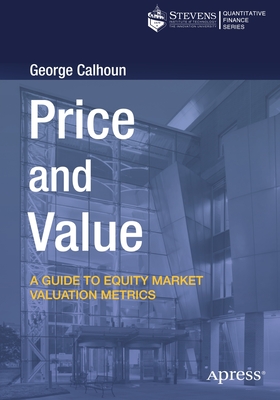Stock Profits : Getting to the Core--New Fundamentals for a New Age
暫譯: 股票利潤:深入核心——新時代的新基本面
Michael Thomsett
- 出版商: Prentice Hall
- 出版日期: 2004-07-16
- 售價: $1,130
- 貴賓價: 9.5 折 $1,074
- 語言: 英文
- 頁數: 288
- 裝訂: Hardcover
- ISBN: 0131435272
- ISBN-13: 9780131435278
已絕版
買這商品的人也買了...
-
 計算機組織與設計--軟硬體界面第二版 (Computer Organization & Design, 2/e)
計算機組織與設計--軟硬體界面第二版 (Computer Organization & Design, 2/e)$680$537 -
 離散時間訊號處理第二版 (Discrete-Time Signal Processing, 2/e)
離散時間訊號處理第二版 (Discrete-Time Signal Processing, 2/e)$650$585 -
 Computer Organization & Architecture: Designing for Performance, 6/e
Computer Organization & Architecture: Designing for Performance, 6/e$980$960 -
 Introduction to Communication Systems, 3/e
Introduction to Communication Systems, 3/e$1,000$980 -
 Operating System Concepts, 6/e (Windows XP Update)
Operating System Concepts, 6/e (Windows XP Update)$1,050$1,029 -
 Cryptography and Network Security Principles and Practices, 3/e
Cryptography and Network Security Principles and Practices, 3/e$1,030$1,009 -
 作業系統概念 (Operating System Concepts, 6/e Windows XP Update)
作業系統概念 (Operating System Concepts, 6/e Windows XP Update)$780$741 -
 資料庫系統原理第三版 (Fundamentals of Database Systems, 3/e)
資料庫系統原理第三版 (Fundamentals of Database Systems, 3/e)$760$600 -
 3ds max 5.x 指令圖鑑 V
3ds max 5.x 指令圖鑑 V$680$578 -
 Java 與樣式理論
Java 與樣式理論$680$537 -
 鳥哥的 Linux 私房菜─基礎學習篇增訂版
鳥哥的 Linux 私房菜─基礎學習篇增訂版$560$476 -
 Modern VLSI Design: System-on-Chip Design, 3/e (平裝)
Modern VLSI Design: System-on-Chip Design, 3/e (平裝)$500$490 -
 人月神話:軟體專案管理之道 (20 週年紀念版)(The Mythical Man-Month: Essays on Software Engineering, Anniversary Edition, 2/e)
人月神話:軟體專案管理之道 (20 週年紀念版)(The Mythical Man-Month: Essays on Software Engineering, Anniversary Edition, 2/e)$480$379 -
 Flash MX 2004 ActionScript 語法參考詞典
Flash MX 2004 ActionScript 語法參考詞典$580$452 -
 C 程式設計藝術 (C How to Program, 4/e)
C 程式設計藝術 (C How to Program, 4/e)$780$702 -
 CCNA 認證教戰手冊 Exam 640-801 (CCNA Cisco Certified Network Associate Study Guide, 4/e)
CCNA 認證教戰手冊 Exam 640-801 (CCNA Cisco Certified Network Associate Study Guide, 4/e)$780$663 -
 Fedora Core 2 Linux 實務應用
Fedora Core 2 Linux 實務應用$650$553 -
 最新 JavaScript 完整語法參考辭典 第三版
最新 JavaScript 完整語法參考辭典 第三版$490$382 -
 Word 排版藝術
Word 排版藝術$620$490 -
 Computer Organization and Design: The Hardware/Software Interface, 3/e(IE) (美國版ISBN:1558606041)
Computer Organization and Design: The Hardware/Software Interface, 3/e(IE) (美國版ISBN:1558606041)$1,200$1,176 -
 Flash ActionScript 2.0 RIA 應用程式開發
Flash ActionScript 2.0 RIA 應用程式開發$760$646 -
 標準普爾教你選對配息股 (The Standard & Poor's Guide to Building Wealth with Dividend Stocks)
標準普爾教你選對配息股 (The Standard & Poor's Guide to Building Wealth with Dividend Stocks)$360$342 -
 31 Days Before Your CCNA Exam: A Day-by-Day Quick Reference Study Guide
31 Days Before Your CCNA Exam: A Day-by-Day Quick Reference Study Guide$1,440$1,368 -
 Fire Your Stock Analyst: Analyzing Stocks On Your Own (Definitive Guides (Financial Times/Prentice Hall))
Fire Your Stock Analyst: Analyzing Stocks On Your Own (Definitive Guides (Financial Times/Prentice Hall))$900$855 -
 股票投資學習手冊:三部曲 Part 3 百戰百勝─如何精確調整你的投資策略 (How to Refine Your Stock Stragety)
股票投資學習手冊:三部曲 Part 3 百戰百勝─如何精確調整你的投資策略 (How to Refine Your Stock Stragety)$320$288
相關主題
商品描述
Table of Contents:
Preface.
I. THE TECHNIQUES.
1. Core Earnings Calculations: A Revised Approach.
Applying the Core Earnings Idea.
The Emergence of the Core Earnings Idea.
A Premise for Stock Selection: Accuracy in the Financials.
Examples of Core Earnings Adjustments.
Long-Term Direction in Corporate Valuation.
Accounting Problems and Stock Selection.
Fundamental Versus Technical Approaches.
Endnotes.
2. Trend Discovery: Finding the Elements of Emerging Change.
The Trends that Affect Long-Term Value.
Balancing PE and Market Perceptions: Looking to the Future.
Distinctions: Investment Value and Current Market Value.
Applying PE Tests.
A Four-Part Approach to Analysis.
Endnotes.
3. Trend Interpretation: Deciding What It Means.
Sales Trends: Identifying Core Revenue.
Sales by Operating Unit or Product.
Sales Interpretation with Changed Segment Mix.
Net Earnings Trends.
Capitalization Trends.
PE Ratio and Core PE Ratio.
4. Confirmation: A Powerful Analytical Technique.
The Dow Theory: Trends and Confirmation.
Confirmation as a Means for Identifying Primary Trends.
Confirmation to Test the Reliability of the Numbers.
Translating Confirming Indicators to Stock Selection Criteria.
Confirmation Applied to Market Price Trends.
5. Fundamental Volatility.
Expanding the Definition of Risk.
Redefining Market Risk.
Guidelines for Treatment of Exceptions.
Fundamentals as the Basis of Market Risk.
Positive and Negative Aspects of Fundamental Volatility.
Using Volatility to Pick Stocks.
Endnotes.
II. THE TOOLS.
6. Investigation: Verifying the Financials.
The Question of Trust: Motives at the Corporate Level.
Healthy Suspicions: How Much Trust Can You Place in the Report?
The Revealing Nature of Investigation.
Trends as the Test of Accuracy: Investigative Techniques.
Endnotes.
7. The Core Earnings Workbook: Finding the Numbers.
Conclusion.
8. The Trend: Workbook: Breaking the Code.
9. Looking Ahead: The Core Roadmap.
The Concept of Corporate Governance.
Symptoms of Governance Quality: Investor Relations.
New Standards for Corporate Reporting.
Coordinating Governance with Core Earnings-Based Reporting.
Risk Tolerance Defined in Terms of Volatility.
Transferring Risk Management into Action.
Applying the Scientific Method.
Working for Reform: A Concluding Action List.
Endnotes.
Index.
商品描述(中文翻譯)
目錄:
前言。
I. 技術。
1. 核心收益計算:修訂方法。
- 應用核心收益概念。
- 核心收益概念的出現。
- 股票選擇的前提:財務數據的準確性。
- 核心收益調整的範例。
- 企業估值的長期方向。
- 會計問題與股票選擇。
- 基本面與技術面方法的區別。
- 參考文獻。
2. 趨勢發現:尋找新興變化的要素。
- 影響長期價值的趨勢。
- 平衡市盈率與市場認知:展望未來。
- 區分:投資價值與當前市場價值。
- 應用市盈率測試。
- 四部分分析方法。
- 參考文獻。
3. 趨勢解釋:決定其意義。
- 銷售趨勢:識別核心收入。
- 按運營單位或產品的銷售。
- 變更細分組合的銷售解釋。
- 淨收益趨勢。
- 資本化趨勢。
- 市盈率與核心市盈率。
4. 確認:一種強大的分析技術。
- 道氏理論:趨勢與確認。
- 確認作為識別主要趨勢的手段。
- 確認以測試數據的可靠性。
- 將確認指標轉化為股票選擇標準。
- 確認應用於市場價格趨勢。
5. 基本面波動性。
- 擴展風險的定義。
- 重新定義市場風險。
- 例外處理的指導方針。
- 基本面作為市場風險的基礎。
- 基本面波動性的正面與負面影響。
- 利用波動性選股。
- 參考文獻。
II. 工具。
6. 調查:驗證財務數據。
- 信任的問題:企業層面的動機。
- 健康的懷疑:你能對報告寄予多少信任?
- 調查的揭示性質。
- 趨勢作為準確性的測試:調查技術。
- 參考文獻。
7. 核心收益工作簿:尋找數據。
- 結論。
8. 趨勢:工作簿:破解代碼。
9. 展望未來:核心路線圖。
- 企業治理的概念。
- 治理質量的症狀:投資者關係。
- 企業報告的新標準。
- 將治理與基於核心收益的報告協調。
- 以波動性定義風險承受度。
- 將風險管理轉化為行動。
- 應用科學方法。
- 為改革而努力:結論行動清單。
- 參考文獻。
索引。











